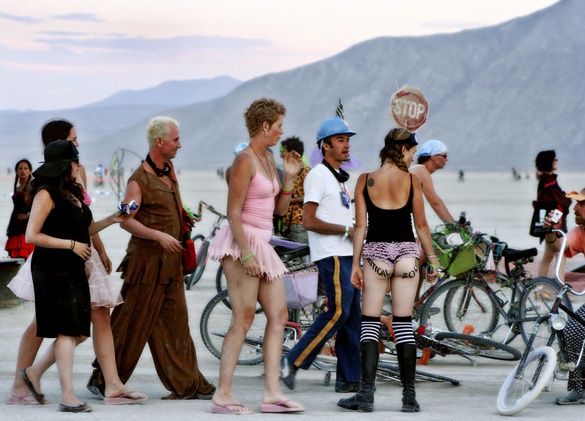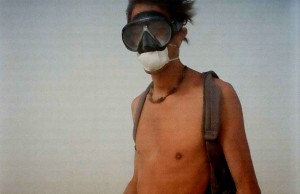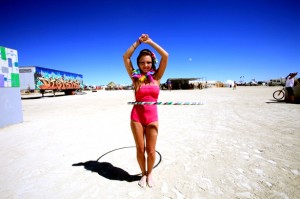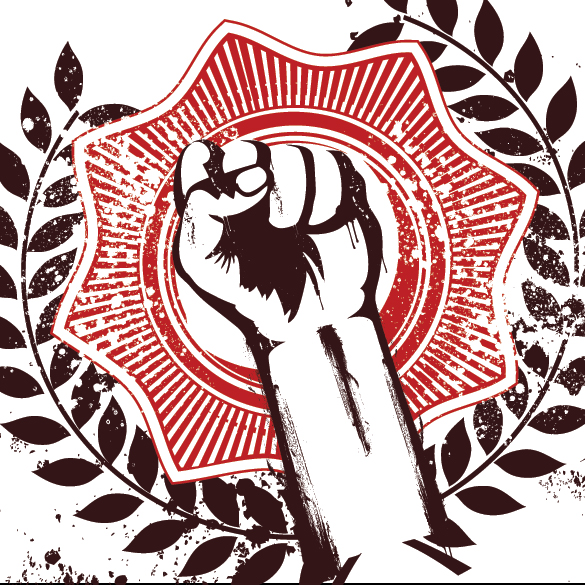What impetus would lead to the construction of a twenty-ton, five-story high Trojan horse? Why, the 2011 Burning Man Festival of course. The festival, which will take place this year from August 29 to September 5, is held each year in Nevada’s Black Rock Desert, a participant-driven exercise in transitory civilization-building in which 40,00 people temporarily set up themed campsites and art installations. This year’s theme is entitled “Rites of Passage” with a Trojan horse planned as the gigantic emblemazation of that (I have not been able to discern quite how, exactly).
Nothing says “community, art, self-expression, and self-reliance” (Burning Man’s apparent focus, according to their website) quite like a $100,000 wooden horse. Designed by Vancouver-based art director, Douglas Bevans, the horse will be a contemporary Cubist sculpture of sorts, with “surrealistic rooms” possessing “spectacular lighting effects” laying as histrionic innards within the gigantic horse’s skeletal structure. According to the planned design, there will be a room where a mysteriously vague “absinthe ceremony” will take place and an oracle room modeled after that of the Delphic oracle, through whom the god Apollo spoke via “ecstatic prophecies” that priests would thereafter translate for human consumption.
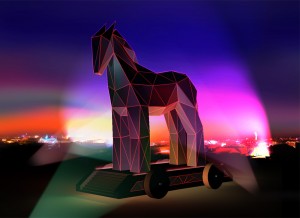
And there’s more…
The beast will be towed by the tens of thousands of free-spirited men and women in attendance across an ancient lakebed known as the playa, where, allegedly, “it will be set on fire with flaming arrows.” In addition to the flaming spectacle, Burners (the term for Burning Man festival-goers) will don the garb of Greek gods and goddessess and march alongside a corps of brass-players, drummers, and percussionists, who will play director Bevans’ latest musical composition.
After reading about the Trojan horse, I was more irked than enamored, more confused than logically in-step with the idea. How could anyone possibly justify spending $100,000 to construct a fake horse, only to set it on fire in a brazen act comparatively as juvenile as when you spent hours as a child constructing miniature cities out of cardboard that you summarily blew up with firecrackers? In the name of art? In the name of fun, camaraderie, spiritual fulfillment? In the name of what, I must ask?
Burning Man is more than just an annual festival constructed within the still expanse of the Nevada desert. Additionally, it’s a belief system, a culture (again, according to their website) that espouses “Ten Principles” that believers can abide by year-round: Radical Inclusion, Gifting, Decommodification, Radical Self-reliance, Radical Self-expression, Communal Effort, Civic Responsibility, Leaving No Trace, Participation, and Immediacy. All of these principles seem lovely in isolation, but we are, remember, talking about spending a multitude of peoples’ hard-earned, one-tenth of a million on a horse to be disintegrated into a mass of un-usable embers. If Burners believe that they must “resist the substitution of consumption for participatory experience,” how can they simultaneously, I argue, spend, expend, and destroy in such a blatant, bizarrely unapologetic fashion?
The Burning horse doesn’t exactly abide by the “Leaving No Trace” Principle. When you make a fire, either in your domestic fireplace or when you shoot flaming arrows into your Trojan horse, the fire emits carbon monoxide, hydrocarbons, and nitrogen oxides into the air, which, when exposed to sunlight, create ground-level ozone, a noxious air pollutant (which is different that the ozone in our stratosphere, which absorbs dangerous UV light). Fires affect both your fellow man and the natural environment, and not in the manner that the creators and
participators in the festival advocate, the lofty production of “positive spiritual change in the world.” Burning Man’s horse is not so innocuous, not so environmentally-friendly, not so much “Leaving No Trace.” One Burner admitted“when we look at the 10 principles even the people running Burning Man admit there are some seriously blurry lines on those principles and for everyone they blur on different levels.”
It is understandable that rule-makers will tweak past words over time to fit their current agendas, but in a festival that is so focused on spiritual harmony free from the fetters of the “default world,” the Burner term for the rest of the universe laying outside the perimeters of the festival, how can the creators assemble a piece of interactive “art” that can only be transformed into a reality via the commodity-transforming currency of that default world? With the theme of this year’s festival being “Rites of Passage,” a premise that purportedly “obliges us to face our innermost insecurities…a willingness to leap off the ladder of ordered existence,” I can only question if there is any type of productive transformation actually taking place. If there is one, it’s from blind idealism to self-imposed naiveté.
